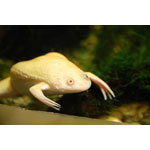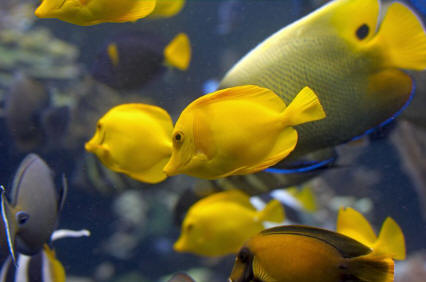Albino Africa Claw Goldfish

|
Scientific Name: Carassius auratus Price: Upon Request Origin: Southern Africa Family: Pipidae NOT AVAILABLE NOW |
|
Other Names: Albino Africa Claw Frog, Xenopus laevis, African Clawed Frog, ACF, Congo Frog, Aquatic Clawed Frog, Clawed African Frog, CAF, Common Plantanna, Golden Congo Frog, Jelly Bean Frog,Grow a Frog |
|
Technical Info
Temperature: 20 - 26 ℃
pH: 6.8 - 7.5
GH: 5 - 12
Max size: 15 cm
Min Tank size: 75 Ltr
Position in Aqua: Bottom swimmer
Description
African Clawed Frogs can change their colouring to camouflage themselves in different surroundings, but generally they have blothchy olive-brown to grayish black skin with paler beige undersides. They have strong hind limbs and arms that end in clawed, but very sensitive hands. They have a flattened appearance, which makes them look quite distinguishable, especially since they also have no eye lids, no tongue and no teeth.
Food
Frozen or freeze dried bloodworms & brineshrimp, Reptomin, any brand of sinking commercial frog food, flake food, livebearer fry.
Breeding
African Clawed Frogs require a simulated spring rainy season to begin the breeding process. This can be achieved by adding 5-8 CM of cool water to the aquarium or simply spraying the surface of the water regularly with de-chlorinated water from a spray bottle. During amplexus (when the male frog grips hold of the female from behind to encourage her to lay her eggs), up to a 1,000 eggs can be spawned. Eggs should be removed as soon as possible to prevent the adults from eating them. They can be kept in a container containing shallow de-chlorinated water and will hatch within a few days. The tadpoles of the species are cannibalistic, so thinning out into separate containers, if possible, is advised. Feed them on micro-organisms from ponds or fish fry food. Strained egg yolk may also be given to them. Metamorphosis occurs in approximately 6 weeks and African Clawed Frogs reach maturity at about 10-12 months.
Compatible with
Spends the majority of its time on the bottom, but will come to the surface to eat. Should only be kept with large fish, as anything that can fit inside its cavernous mouth will end up there.
Note
These frogs are in the same family but different genus than the dwarf African frog, Hymenochirus boettgeri which has become very popular in recent years. However, the care of dwarf frogs is similar (on a smaller scale).

